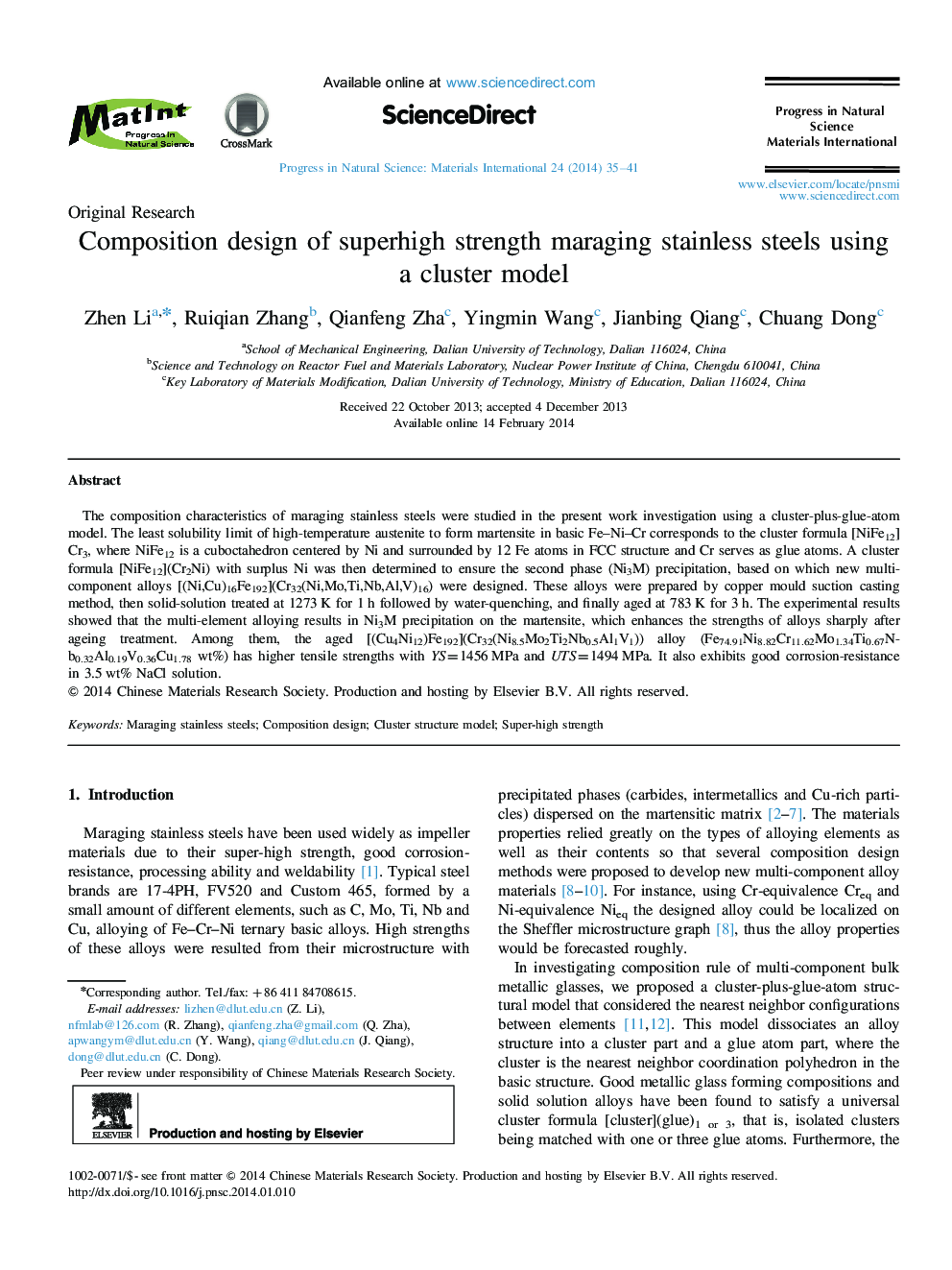| Article ID | Journal | Published Year | Pages | File Type |
|---|---|---|---|---|
| 1548121 | Progress in Natural Science: Materials International | 2014 | 7 Pages |
The composition characteristics of maraging stainless steels were studied in the present work investigation using a cluster-plus-glue-atom model. The least solubility limit of high-temperature austenite to form martensite in basic Fe–Ni–Cr corresponds to the cluster formula [NiFe12]Cr3, where NiFe12 is a cuboctahedron centered by Ni and surrounded by 12 Fe atoms in FCC structure and Cr serves as glue atoms. A cluster formula [NiFe12](Cr2Ni) with surplus Ni was then determined to ensure the second phase (Ni3M) precipitation, based on which new multi-component alloys [(Ni,Cu)16Fe192](Cr32(Ni,Mo,Ti,Nb,Al,V)16) were designed. These alloys were prepared by copper mould suction casting method, then solid-solution treated at 1273 K for 1 h followed by water-quenching, and finally aged at 783 K for 3 h. The experimental results showed that the multi-element alloying results in Ni3M precipitation on the martensite, which enhances the strengths of alloys sharply after ageing treatment. Among them, the aged [(Cu4Ni12)Fe192](Cr32(Ni8.5Mo2Ti2Nb0.5Al1V1)) alloy (Fe74.91Ni8.82Cr11.62Mo1.34Ti0.67Nb0.32Al0.19V0.36Cu1.78 wt%) has higher tensile strengths with YS=1456 MPa and UTS=1494 MPa. It also exhibits good corrosion-resistance in 3.5 wt% NaCl solution.
